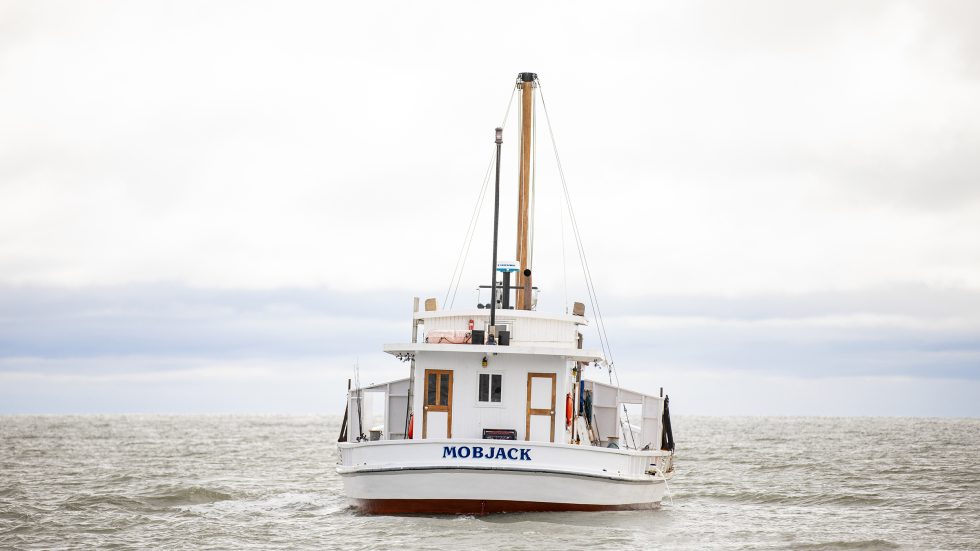Recently, the owner of a Hatteras 53 and I attempted to remove an anchor windlass motor that had failed. Rust streaks running from the interior of the motor were evidence that all was not well internally. We had plenty of voltage going to the motor, but it wouldn’t respond. It was due for a trip to the shop.
The trick was to remove the motor from below deck. The owner worked from inside the cramped chain locker but couldn’t get at the internal wrenching knurled setscrew. He had disconnected the electric leads to get the wiring out of the way, but after dozens of tries with both metric and standard sizes, he couldn’t fit an Allen wrench to the screw.
With little room to work and dim light, he gave up. Kneeling on a pile of chain for an hour or two, even with a bundle of rags for padding, was not fun. We ended up by unbolting the windlass and pulling the motor up through the main deck. Cutting through the bedding compound made it a three-hour job. Once on deck, the motor was easily removed from the drive shaft by releasing the 3/8-inch set screw.
With this job, and dozens of others a skipper can encounter, there are ways to ease the pain and suffering of a tedious or seemingly impossible task. Here are a couple of ideas that may help.
As Always, Size Matter
In the case described above, we didn’t find the proper Allen wrench. Size matters, and we weren’t even close. A trick some mechanics have used in the past is to take a drop of grease or oil and wipe it across the face of the Allen head screw. Then, place a piece of paper over the screw head and rub or press the paper with a finger, getting an imprint from the screw head. This imprint will be close enough in most cases to give an idea of size for the wrench.
As in the case above, once the Allen head screw was removed, it should have been replaced with a hex-head screw. The owner stated that even if he could have gotten an Allen wrench on the set screw, he could not have rotated it due to limited space in the forepeak. A 1/4-inch ratchet and socket, or a box-end wrench, might have been more workable if the screw head was external wrenching.
Electronics Problems
A fellow boater was faced with an equally tough problem. An electronics unit was mounted in a very tight, inaccessible space at the navigation station on his boat. Lying on his back with his head stuck in a cabinet below the nav table, he could see the electrical connections, but he could barely get a wrench on the connector nuts.
“I’ve been studying the problem for days, trying to figure out a way to do the job,” he said. As a skilled machinist, he is well aware of dozens of unique techniques to get nearly impossible things done. Yet, this problem presented a real challenge.
He said, “I’m afraid to disconnect the electrical leads to remove the unit. When I replace it, I will have a hard time getting them back on or on the proper terminals.”
He’ll find a way. I suspect he will put a piece of colored tape on the lead, and a matching piece on the terminal. Then, on the next lead, he’d do the same with a different color. Putting it back, he will rely on the “feel” method and check each terminal connection with a mirror and flashlight.
Other Approaches
In some cases, removing a piece of electrical equipment such as a bilge pump, starter or generator, can more easily be done without disconnecting the electrical connections. First, disconnect the batteries or trip the circuit breakers to make sure that power cannot be applied to the leads. Then, when the equipment is removed and out in the clear, disconnect the leads.
Take care, however, that the weight of the equipment is not suspended by the electrical wiring. The procedure is reversed for reinstallation.
Another trick is to work from or through another compartment or access panel. Several long extensions and a universal joint attached to a ratchet handle may help. In some cases, cutting a small access hole through a bulkhead may be in order. Double check to be sure you are not cutting through a fuel line or electrical wiring bundle.
In cases where several adjoining pieces of equipment must be removed to facilitate repairs, it is wise to make a few sketches of the layout, both mechanical and electrical. Taking photos may help jog the memory to ease the task of reassembly. This is especially important if there will be a long delay in getting back to the job.
When reinstalling hoses or other parts, try to position the clamps or cable or hose routing to make future access easier.
Take care not to drop tools, nuts, washers or other hardware into the bilges. These items can be difficult to retrieve and may even plug up bilge pumps. I once crewed on a fishing boat that produced a peculiar sound when the boat rolled. A couple of years went by until we removed a fuel tank. We found the source of the mysterious noise — a quarter-pound lead ball fishing weight was rolling back and forth near a bilge frame. Over time, the ball had worn a dangerously deep track in the fiberglass hull.
In the manufacture and repair of boats and ships, workers small of stature are sometimes used to crawl into nearly inaccessible, tight spaces. Although we boat owners and maintainers have very little choice in our body size, persistence, patience and endurance will often help us solve these tough repair problems.
A day or two spent analyzing the prospective job will often reap big rewards. Lastly, there is always the possibility that a fellow boater has a useful idea or two that just might be worth trying. And, of course, a trip to the Internet for Web sites of boat and equipment manufacturers can produce technical assistance that lets you get the job done more easily.



